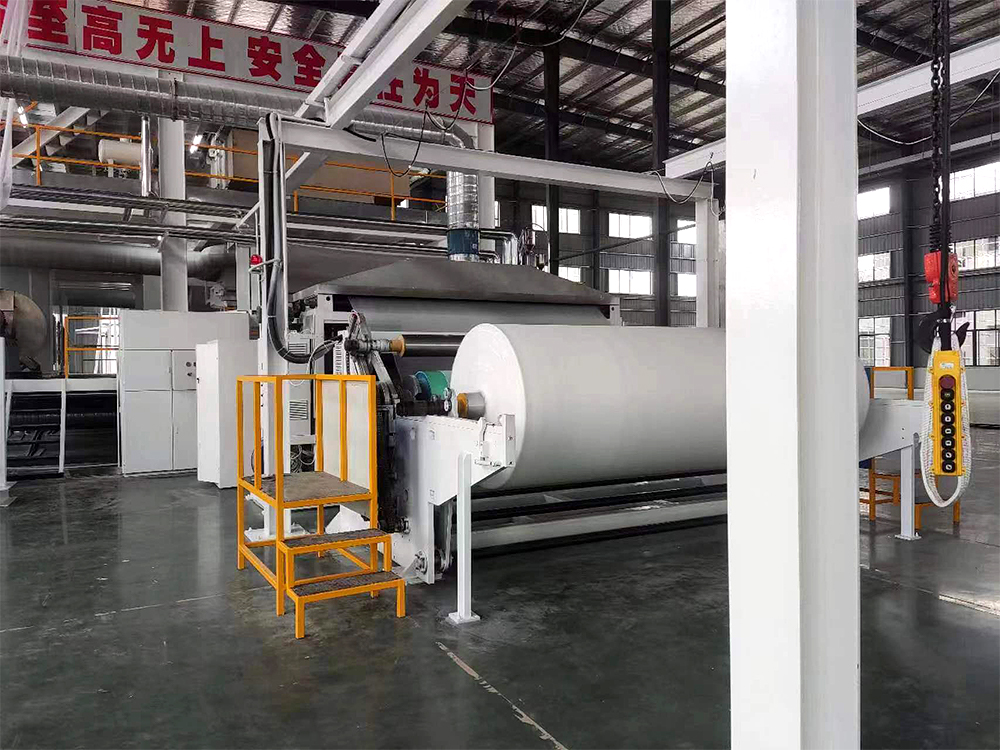In the realm of nonwoven fabric production, PP SSMMS spunmelt machines stand out as versatile and high-performance solutions. This comprehensive guide explores the inner workings, advantages, and considerations of PP SSMMS spunmelt machines, highlighting their ability to produce a wide range of nonwoven materials for various applications.
Understanding PP SSMMS Spunmelt Machines:
PP SSMMS spunmelt machine, also known as single-step sandwich meltblown spunmelt machines, combine the processes of spunbond and meltblown nonwoven production into a single efficient operation. These machines utilize polypropylene (PP) as the primary raw material to create high-quality nonwoven fabrics.
Process Overview:
Polymer Feeding and Extrusion: PP granules are fed into the machine’s hopper and conveyed into the extruder. Inside the extruder, the polymer is melted and forced through a spinneret with numerous tiny holes.
Fiber Formation: As the molten polymer exits the spinneret, it is drawn vertically by a godet system, which cools the filaments with air. This process results in the formation of continuous, thin, and stable fibers.
Sandwiching: In the sandwiching area, hot air is injected between the spunbond layers to create the meltblown layer. The upper and lower conveyors guide the spunbond fibers, while nozzles strategically placed in between deliver hot air. The amount of hot air, air pressure, and nozzle arrangement determine the meltblown layer’s basis weight and thickness.
Annealing and Cooling: After sandwiching, the combined spunbond and meltblown web passes over a roller bed and into an oven for annealing and further cooling. This process enhances the web’s strength and stability.
Winding: The annealed composite web is then wound onto a take-up roller, ready for further processing or packaging.
Advantages of PP SSMMS Spunmelt Machines:
High Production Rates: These machines can produce up to 800 kg/hr of nonwoven material, making them highly efficient and productive.
Web Width Flexibility: PP SSMMS spunmelt machines offer web widths ranging from 1.2 to 4.5 meters, accommodating various production requirements.
Precise Layer Ratio Control: The combination ratio of spunbond to meltblown layers can be precisely adjusted, allowing manufacturers to tailor the web’s properties for specific applications.
Uniform Web Weights: Advanced control systems ensure consistent basis weights within +/- 3%, resulting in high-quality and reliable nonwoven fabrics.
Superior Quality and Performance: The integrated process creates composite webs with excellent bonding between layers, enhancing strength, barrier properties, and filtration efficiency.
Considerations When Selecting a PP SSMMS Spunmelt Machine:
Web Width and Production Rate: Determine the desired web width and production rate to match your specific application requirements.
Layer Ratio Flexibility: Consider the range of layer ratios the machine can produce to achieve the desired nonwoven properties.
Energy Efficiency: Evaluate the machine’s energy consumption and efficiency to optimize operational costs.
Technical Support and Maintenance: Assess the availability of technical support, maintenance services, and spare parts from the machine supplier.
Applications of Nonwoven Fabrics Produced by PP SSMMS Spunmelt Machines:
Hygiene Products: Disposable diapers, feminine hygiene products, and surgical gowns.
Filtration Media: Air filters, liquid filters, and medical filtration materials.
Apparel Fabrics: Disposable clothing, wipes, and protective gear.
Industrial Fabrics: Geotextiles, roofing membranes, and packaging materials.
